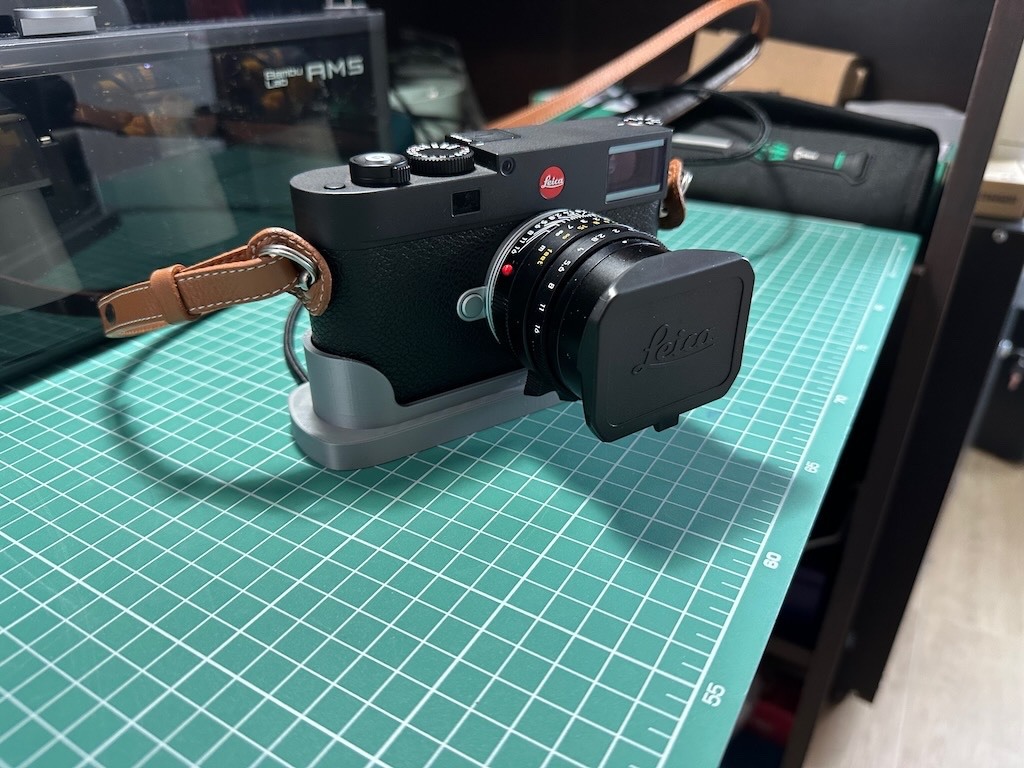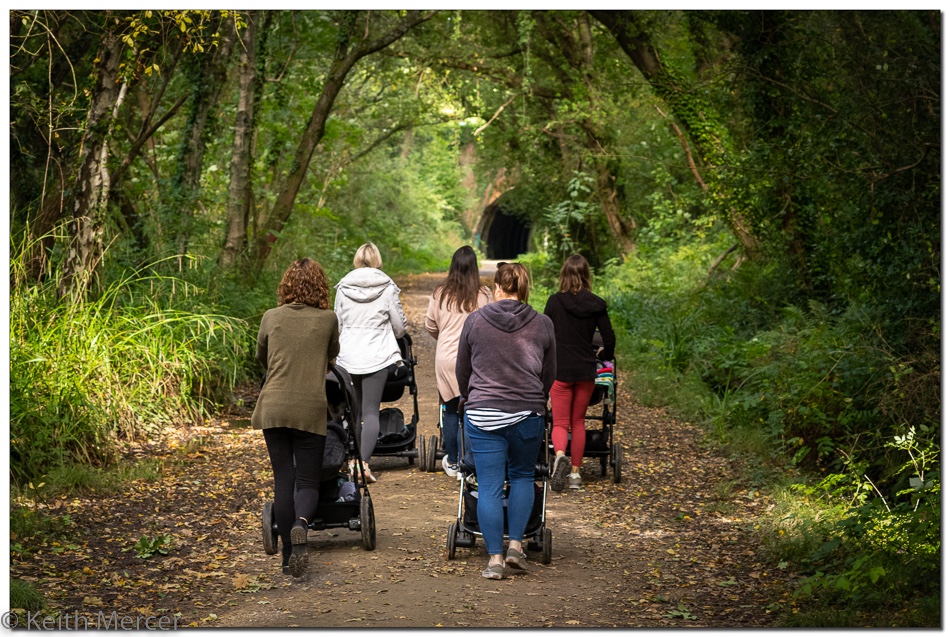Search the Community
Showing results for tags 'm11'.
-
Hello everyone, I made a reservation for the Leica M11 at the end of May. While making a reservation, there was an issue where all the digital red LEDs at the bottom (red LEDs) looked blurred when viewing the viewfinder in the store. I wore -3.25 diopters of glasses with all my eyes and it looked blurry while wearing them, and when I used the -2.0 and +0.5 Correction lens in the store, the -2.0 looked relatively clear.(With glasses on!) The question here is, isn't the Correction lens an accessory for astigmatizing users to use without glasses? I still don't understand exactly why Leica's viewfinder is -0.5. -0.5 Is it a diopter, so it looks 1.0 for a person with a frameline and focus area (victitious 2m) and has a bare-eye 1.0 vision?
-
Hi everyone, Photography has been my love for over 30 years now. I've owned a lot of camera's (film and digital). I recently switched from medium format Fujifilm (GFX-50r, which was big and heavy like a brick) to Leica M11. A dream came true. I love everything about the camera except two things. First is dust on the sensor. I only use one lens and never take it of. Still there's more and more dust on the sensor over time. Is this normal? Isn't the camera sealed? But my GREAT problem is... motion blur. I've never experienced it this way. I know it's said to be a resolution thing, but coming from 50MP medium format, I was quite used to high resolution and never experienced these kind of problems. I'm using a new Summilux 35/1.4 (not the newest, close range focussing version, but the previous). I'm having most problems shooting (almost) wide open. It's nearly impossible to take a non-motion-blurred shot. It's not focussing, That looks okay from a distance. But zooming in... everything has motion blur (or something else?). Even at 1/6500s... Of course I have been practising a lot with the M11. Please look at this test shot. Looks okay, but then... when you zoom in... I know, I know this is an extreme close-up, but still I was used to a quite sharp (motion free) part of the picture, using bij GFX camera. I do not pixel peep at all! I really hope someone can give me the golden tip. It's driving me crazy and I'm thinking about selling my dream camera. This really makes me sad. Leica M11 ISO 64 1/6500s F/1.4 Processed in Capture one (used Light too, no difference). Thank you in advance!
-
I’ve been playing with the Leica M 11 Monochrom for about a week now. At higher ISOs, I have noticed the presence and some images of a tartan-like grid pattern. At first I thought it was lights that was causing this pattern. Then I started to wonder if my sensor was defective. After reading a review, I noticed that the reviewer also mentioned that at ISO’s as low as 6400 a tartan-like grid pattern could appear in the shadow areas of the image. So my question are as follows: • Is this a defective sensor? • Is it something that can be fixed with firmware? • Are Leica aware of this issue. • Are there plans to address it this matter? High ISO performance is all well and good, but if the image is ruined by pattern noise, then it no longer becomes usable at those ISO’s. More concerning is the revelation that this pattern noise may be present as early as 6400 ISO. This discovery has taken the shine of this camera for me. I do hope for some good news from Leica soon.
- 24 replies
-
- m11 monochrom
- monochrom
-
(and 1 more)
Tagged with:
-
In a recent interview in Austrian Der Standard Peter Karbe was asked which camera and lens would be his preferred choice. The answer was "not an easy one", but it would be M11 and APO-Summicron 35. "STANDARD: One last question: If you had to choose a combo, what would be your camera and your lens of choice? Karbe: The M11 and APO-Summicron 35mm. But that's one of those questions... which of your children do you like best? If I had to choose, I would use this combination." Here is the link to the full (unlocked) Peter Karbe Der Standard interview (in German) by Mickey Manakas, where he speaks about the compromise in building the Noctilux f/0.95 and its evident flaws, the "Leica Look" myth, his views on smartphone photography, his pride in personally calculating the optical formula for Summilux 50 ASPH and many other cool topics: https://www.derstandard.at/story/2000144541043/leitender-optikexperte-bei-leica-wir-waren-vorreiter-bei-der-digitalisierung
- 40 replies
-
- 11
-

-

-
- summicron
- peter karbe
-
(and 5 more)
Tagged with:
-
Hi Everyone. I'm a decade-long Fujifilm user who switched to a Leica M11 three weeks ago. There were a lot of feelings about using a Leica, and I was baffled initially (no EVF). But more than that, using an X100V previously, I share my experiences and thoughts. It's a 5000 words extended essay, and I covered things like my lens of choice, M11 vs. X100V, why I love the M11, and many other things. I thought some of you would be interested in it: https://arslan.io/2023/01/06/from-fujifilm-to-leica-my-experience-with-the-m11/
- 75 replies
-
- 16
-

-

-
Is there a way to keep both off at all times and just turn them on when needed? I have found that in FOTOS settings in connectivity I can turn wifi off but then the BT icon appears.
-
Hi, What do you think, will there be a Leica M11-D without the display? I would love to see Leica producing cameras that even more reproduce the feeling of analog photography with the advantages of the digital world. My perfect digital Leica would be an M11 without the display and a top handle that NEEDS to be pulled to shoot the next picture, like on film cameras. That would bring so much analog feeling to it... Also there could be technology like internal film grain, halation or even different films stocks that are embedded into the raw, like Arri did with the new Alexa s35 texture controls. Just some thoughts, does anyone from Leica listen? 🙂
-
- 3 replies
-
- 13
-

-

-
- m11
- 21mm super-elmar 3.4
-
(and 1 more)
Tagged with:
-
Hi, I can't easily find posts about the M11 and the Tri-Elmar 28-35-50. I don't have either, just film Leicas currently. Does anyone have experience with this combination? Does the M11 have a built in profile for this lens? (if I can't find a coded lens). Thanks Sam
-
Hallo liebe Leicanianer, ich hatte gestern auf einer Fototour einen kleinen Alptraum, weil meine Leica M11 einfach nicht mehr Auslösen wollte. Habe zig mal den Akku herausgenommen und wieder reingesteckt, ebenfalls die Speicherkarte. Man hat ja so seine Erfahrungen nach all den Jahren nicht nur mit Leicakameras. Die Kamera zeigte folgende Symptome: bereits beim Akku reinstecken ohne das die Kamera an war zeigte sich das Betriebslämpchen rot, man hörte auch ein Geräusch, als wenn sich der Vorhang öffnet, aber ansonsten wurde kein Vorschaubild angezeigt, einfach gar nichts. Dann habe ich die Play und Menü Taste vor und während des Einsetzen des Akkus gedrückt und oh Wunder sie funktionierte wieder. Vielleicht war es Zufall aber ich habe sie bestimmt 2 Stunden nicht zum Leben erwecken können. Noch mal Glück gehabt! Hattet ihr das auch schon einmal?
-
Hi everyone. This is not a commerical project, but a hobby project I've worked myself on the side. I wanted to share it with you. The USB-C port of the M11 is not in a very convenient place. Second, I wanted to have an easy way to charge my M11, without having to constantly plug a cable. I modeled a charging dock, and 3D printed it at home. I had many iterations until I found something that works fine. Some todos: * Wrap the inside with fabric to avoid scratching the surface * Look into magnetic USB-C connectors * Add magnets into the housing, so it can stay strong on my library shelves (they are made out of metal) Here are the photos:
- 28 replies
-
- 41
-

-

-
Article on the Online Photographer website about a recent interview with Dr Kaufmann on a French website. Interesting snippets regarding film & digital M production numbers. PS - wasn't sure if this was the best place for the post - feel free to move it if it would garner more readers elsewhere.
-
Hello, I'm trying to get my M11 and 24D to get along. I'm using a Nikon SC-17 cable, and while the flash will fire in TTL mode, I cannot seem to get a proper exposure so it seems to me that TTL is simply not working. I checked the batteries and they have plenty of power in them. I've told the flash what aperture setting I'm using, and set the ISO on the camera to 800. The shutter speed is set to the flash sync setting (lightning bolt). It simply does not appear to be working as a TTL flash. I'd appreciate any advice. I'm open to the possibility of needing to buy a more modern TTL flash but am hoping that won't be necessary. Thanks!
-
Similar to the problems reported in other threads (here and here) my M11 (new late Sept) no longer works with Visoflex 2. The M11 no longer recognises the presence of the EVF and the EVF controls in the menu remain greyed-out when either EVF or EVF Extended have been selected and yes - I have gone through all the checks and actions associated with the issue. The Visoflex 2 works perfectly with my M10M so unfortunately (and most annoyingly) a four month old camera costing £7500 will have to be returned to the UK dealer. Will ring them in the morning (Wed) to discuss the issue.
- 7 replies
-
- m11
- visoflex 2
-
(and 1 more)
Tagged with:
-
-
Hello Everyone this is my first post here. Let me quickly introduce myself. i‘m reto, living in Switzerland and do photography as a hobby for about 6years now. Started with fuji and then switched to sony (a7riii). Love the camera but after 1 year I noticed that i only shoot M mount lenses eith the adapter.. the camera itself produces nice pictures but doesnt make any fun to use (at least for me). I have a Voigtlander Besa R2M which i love.. but doesnt use that often since film is so expensive.. my current gear: Sony A7rIII voigtlander 35mm 1.7 Ultron Zeiss Sonnar 50mm 1.5 My concern now is: I would love to own a Leica since more than 3 years.. but couldn’t afford any until today. Now I have the wallet to afford my first M. I mostly photograph during travels (Bikepacking, Backpacking), lifestyle portraits and Landscape (hiking, climbing) and I do love astrophotography (milkyway) I dont want to carry more than 2-3 lenses. 21mm for landscape (have to buy a 21 first) 35mm for everday use and 50mm for portrait. I want to buy my first leica M now. what would you go for? I can get… M11 used for 7200€ M10R for 5750€ M10 for 4000€ I factor thos things as most important to me: - battery life (i‘m spoiled with my sony!) i dont want to carry 2-3 spare batteries plus a charger.. - image quality (DR, and iso performance, shutterspeed, since i like to shoot at 1.5f in bright daylight) i dont need 60mp.. would ratter use 38mp or max 40mp on the m10r. - reliability. The camera will be a tool for me.. i will use it during bikepacking, climbing, etc. M11. go all in on the m11 (but i read that there are some issuses with freezing and so on). If i get the m11 i cannot buy another lens for a while. M10R. I save a few bucks if i get the m10R instead of the M11.. can safe that money for another lens.. but maybe have the feelings I‘m missing out because I dont get the newst camera. M10. Is by far the cheapest at 4k. I can easily buy a lens and camera at the same time. What would you go for? i dont really know in which direction I should go. Is the M11 really that much better or is it just my GAS. Would the M10R be a good compromise? many thanks for your advice & have a great one! reto
- 96 replies
-
- first leica setup
- firstpost
-
(and 3 more)
Tagged with:
-
-
Yodobashi Camera's top ten best-selling interchangeable lens digital cameras for the first half of November 2022 have been posted on CAPA CAMERA WEB. CAPA CAMERA WEBに、ヨドバシカメラの2022年11月上期のレンズ交換式デジタルカメラの売れ筋ベストテンが掲載されています。 >>Data collection period: November 1st to November 15th, 2022 データ集計期間 : 2022年11月1日~11月15日 第1位 ニコン Z 9 ボディ 第2位 ソニー α7 IV ボディ 第3位 キヤノン EOS R6 ボディ 第4位 キヤノン EOS R5 ボディ 第5位 ソニー α6400 ダブルズームレンズキット 第6位 ソニー α7S III ボディ 第7位 キヤノン EOS R7 ボディ 第8位 ソニー FX30 ボディ 第9位 ソニー α7 IV ズームレンズキット 第10位 ライカ M11 ボディ ライカのレンジファインダー機「ライカ M11」がトップ10入りを果たした。ライカブティックがあるヨドバシカメラならではの結果といえよう。 >>Leica's rangefinder "Leica M11" entered the top 10. It can be said that this result is unique to Yodobashi Camera, which has a Leica boutique. あと、ライカM11のランクインは驚きですね。 >>Also, the ranking of the Leica M11 is surprising.
-
I am wondering what memory cards those who have an M11 are using with it. I normally use SanDisk memory cards in my M10M, Q2 and MP 240; these work well, unlike Lexar cards which are prone to cause corrupted files and were the bane of my existence till I switched over to SanDisk SDXC cards. B&H has the ProGrade Digital 256GB UHS-II SDXC Memory Card which they are recommending for use with the M11: https://www.bhphotovideo.com/c/product/1499810-REG/prograde_digital_pgsd256gbckbh_256gb_uhs_ii_v90_sdxc.html Does anyone have any experience in using this memory card with any digital Leica camera? If so, does "it work and play well" with Leica's electronics? Or should we play i safe and go with what seems to work, the SanDisk 128GB Extreme PRO UHS-II SDXC card? https://www.bhphotovideo.com/c/product/1617741-REG/sandisk_sdsdxdk_128g_ancin_128gb_extreme_pro_uhs_ii.html Any information that anyone can share with the rest of us will be greatly appreciated.
-
Hello All, I am very impressed with the specs of the new M11. I trust Leica to improve their performance with ever new camera. I have seen massive improvements on every M series camera from my old M9 to my current M10 and SL. I know quite a bit about camera sensor technology from my use and study of digital cinema camera sensors. But, sensor backside illumination (BSI) is a new technology to me. I would like to know more about it. Thanks! Some of my work is on: HarryMathiasImages.com























